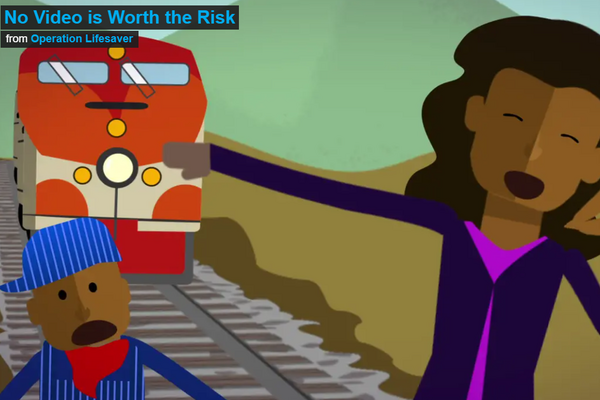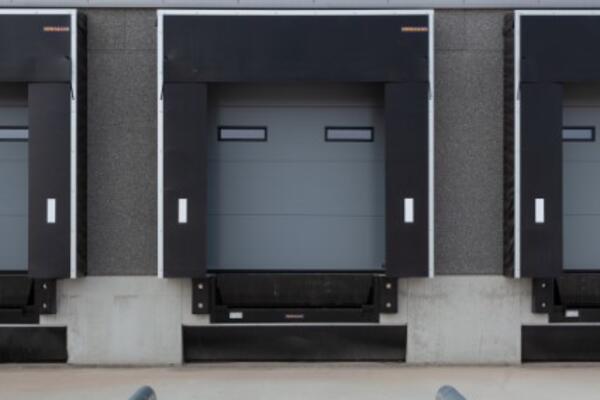Last week I was looking through my Facebook and ran across a posting by an acquaintance who posted pictures of their daughter who is a senior in high school standing on a railroad track. Operation Lifesaver has for years warned people of taking photos standing on rail tracks, as this portrays this is a safe place for pedestrians. Ever think how many times a day on your drivers routes your drivers cross a train track? Most of the time drivers take for granted that there is not a train coming and proceed crossing the track. Provide the driver’s guide in the link for each of your drivers and have them take the safety quiz.
Download: Stay Alive When You Drive- Professional Driver's Guide and Safety Quiz here.
Safety Tips for Truck Drivers
- At 55 mph, it can take a mile or more to stop a train.
- Stop no closer than 15 feet (one car length) from the crossing. If you are in traffic, don’t start if you can’t safely clear the crossing.
- Note the overhang – both for your truck and a train – of 3 feet or more.
- Make sure that trailer jacks are in the up position - non-retracted trailer jacks can cause trailers to become stuck on crossings.
- Cell phones are the top distraction for all drivers.
- Trains and Trucks don't mix. Never race a train to the crossing — even if you tie, you lose.
- The train you see is closer and faster moving than you think. If you see a train approaching, wait for it to go by before you proceed across the tracks.
- Be aware that trains cannot stop quickly. Even if the locomotive engineer sees you, a freight train moving at 55 miles per hour can take a mile or more to stop once the emergency brakes are applied. That's 18 football fields!
- Never drive around lowered gates — it's illegal and deadly. If you suspect a signal is malfunctioning, call the 1-800 number posted on or near the crossing signal or your local law enforcement agency.
- Do not get trapped on the tracks; proceed through a highway-rail grade crossing only if you are sure you can completely clear the crossing without stopping. Remember, the train is three feet wider than the tracks on both sides.
- If your vehicle ever stalls on a track with a train coming, get out immediately and move quickly away from the tracks in the direction from which the train is coming. If you run in the same direction the train is traveling, when the train hits your car you could be injured by flying debris. Call your local law enforcement agency for assistance.
- At a multiple track crossing waiting for a train to pass, watch out for a second train on the other tracks, approaching from either direction.
- When you need to cross train tracks, go to a designated crossing, look both ways, and cross the tracks quickly, without stopping. Remember it isn't safe to stop closer than 15 feet from a rail.
- ALWAYS EXPECT A TRAIN! Freight trains do not follow set schedules.
- If you get stuck at the crossing, get out, call the 800 number posted at the crossing, or call the local police to alert trains of your position. (Information provide by Operation Lifesaver)
Operation Lifesaver, Inc. is a national, non-profit safety education group whose goal is to eliminate deaths and injuries at railroad crossings and along railroad rights of way. Operation Lifesaver has programs in all 50 states, with trained and certified presenters who provide free safety talks to community groups, school bus drivers, truck drivers and student drivers to raise awareness around railroad tracks and trains. For more information, and to request a free safety presentation, visit www.oli.org.
New Operation Lifesaver Video Warns Filming on Train Tracks is Illegal & Deadly!
With the ever growing amount of social media, it is not surprising there have been several deadly incidents involving people making videos near railroad tracks. The national nonprofit rail safety education group Operation Lifesaver, Inc. (OLI) has released a new animated video to warn amateur filmmakers and smart phone users of the dangers and illegality of using train tracks for videos. The new video is the latest in a series drawing attention to illegal and dangerous activities involving train tracks.
FMCSA Publishes 2020 Pocket Guide to Truck and Bus Statistics
The Federal Motor Carrier Safety Administration has published the 2020 edition of its Pocket Guide to Large Truck and Bus Statistics. The report contains data on the motor carrier and driver census, crashes, fatalities, investigations, and inspections.
According to the FMCSA, as of December 2019, there were 602,542 interstate motor carriers and intrastate hazmat motor carriers operating in the United States. In addition, some 3.4 million commercial motor vehicle drivers with CDLs operated in interstate commerce and another 1.5 million CDL drivers operated in intrastate commerce.
The report noted that some 3.4 million commercial motor vehicle and driver inspections were conducted in 2019. As a result of those inspections, 5.1% of drivers were placed out of service and 20.7 % of vehicles were placed out of service. In addition, when the inspected vehicle was transporting hazardous materials, the out of service rate was 4.5%.
The most common driver violations in inspections were, in order of frequency:
- Speeding (6-10 mph over the posted speed limit);
- Failure to obey traffic control device;
- Failure to use seat belt while operating a CMV;
- Record of Duty Status violation (form and manner of recording);
- Operating a property-carrying CMV without a proper medical certificate;
- False report of Record of Duty Status; and
- Operating a CMV without a CDL.
Of the 602,542 carriers regulated by the FMCSA in 2019, 40,460 had a satisfactory safety fitness rating, 14,919 had a conditional rating, and 1,320 had an unsatisfactory rating. But 545,843 carriers, or over 90% of the total number of regulated carriers, had no safety fitness rating from the FMCSA.
In 2018, there were 4,415 fatal crashes involving large trucks, an increase of 18% since 2015. Additionally, in 2018, there were 107,000 injury crashes involving large trucks, an increase of 22.4% since 2015.
FMCSA Releases ‘Ag Commodity’ HOS Rule Change
The Federal Motor Carrier Safety Administration (FMCSA) has released a new hours-of-service rule affecting motor carriers engaged in the transportation of livestock, produce, grains, plants, and other perishable agricultural products.
The new rule expands the variety of agricultural commodities that are eligible for a complete exemption from the FMCSA’s hours-of-service rules in 49 CFR Part 395. The so-called “ag exemption” found in §395.1(k) applies to drivers transporting agricultural commodities or farm supplies within a 150-air-mile radius of their source during the state’s planting and harvesting season.
Because the new rule also expands the definition of “livestock,” it adds to the list of drivers who are exempt from the FMCSA’s requirement for 30-minute breaks. Section 395.1(v) says livestock haulers are exempt from breaks as long as they have animals on the vehicle.
New definitions
The new rule continues to define “agricultural commodity” as “any agricultural commodity, non-processed food, feed, fiber, or livestock.” However, given how vague that definition has always been, the agency has added and/or revised the following definitions:
Any agricultural commodity means horticultural products at risk of perishing, or degrading in quality, during transport by commercial motor vehicle, including plants, sod, flowers, shrubs, ornamentals, seedlings, live trees, and Christmas trees.”
Livestock means livestock as defined in sec. 602 of the Emergency Livestock Feed Assistance Act of 1988 [7 U.S.C. 1471], as amended, insects, and all other living animals cultivated, grown, or raised for commercial purposes, including aquatic animals.
Non-processed food means food commodities in a raw or natural state and not subjected to significant post-harvest changes to enhance shelf life, such as canning, jarring, freezing, or drying. The term “non-processed food” includes fresh fruits and vegetables, and cereal and oilseed crops which have been minimally processed by cleaning, cooling, trimming, cutting, chopping, shucking, bagging, or packaging to facilitate transport by commercial motor vehicle.
The changes will go into effect 15 days after the rule is published in the Federal Register, which is expected to happen in coming days.
Interim final
The rule was issued as an “interim final” rule, meaning the FMCSA was able to skip the normal step of first publishing a proposed version of the rule and accepting public comment before issuing the final product. Instead, the public will have 30 days to submit comments after the rule is published.
In July 2019, the FMCSA issued a notice about its plans to write the new rule and asked for public input at that time. The agency received 145 comments in response.
Have You Prepared Your Terminal Facility for the Long Thanksgiving Holiday Weekend?
It is not uncommon for thieves to target truck terminals over the holidays as they know it is a good opportunity are there is no one there. Make sure that you take extra precaution to secure the trucks and items of value at your terminal. If your units do not have anti-siphon devices or locking caps instruct the drivers not to fill the units at the end of the day. Make sure that all security alarms and security lighting is in working order. Walk the perimeter of the lot to make sure that security fencing is in good condition. Move units and all other material such as pallets, tires, etc. far enough away from the fence so they cannot be used to climb on to get over the fence. Consider blocking the entrance and exits to the lot so units cannot be stolen. Throughout the four-day weekend assign management personnel to check the terminal randomly. Using a little prevention and common sense can deter a thief from striking your facility.










